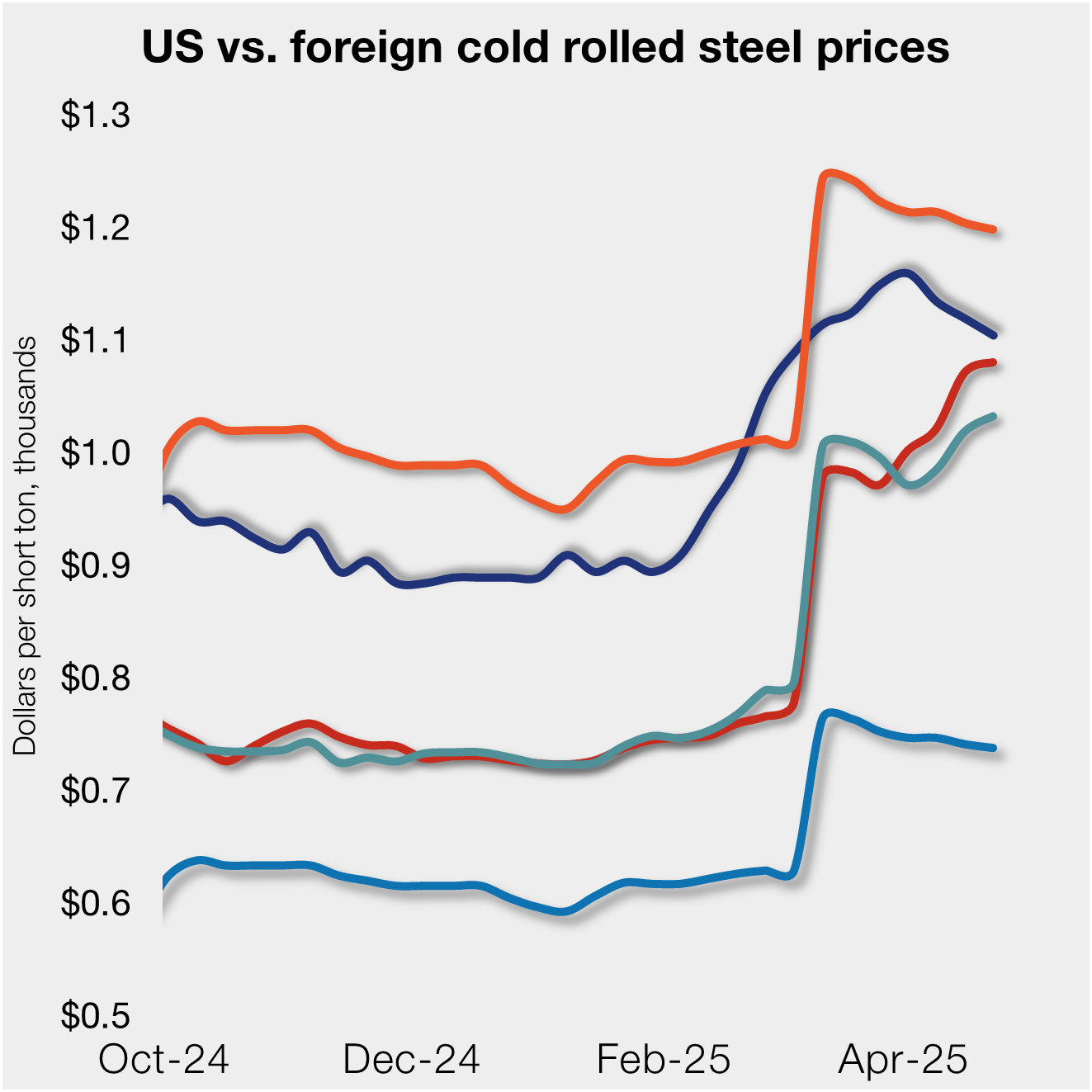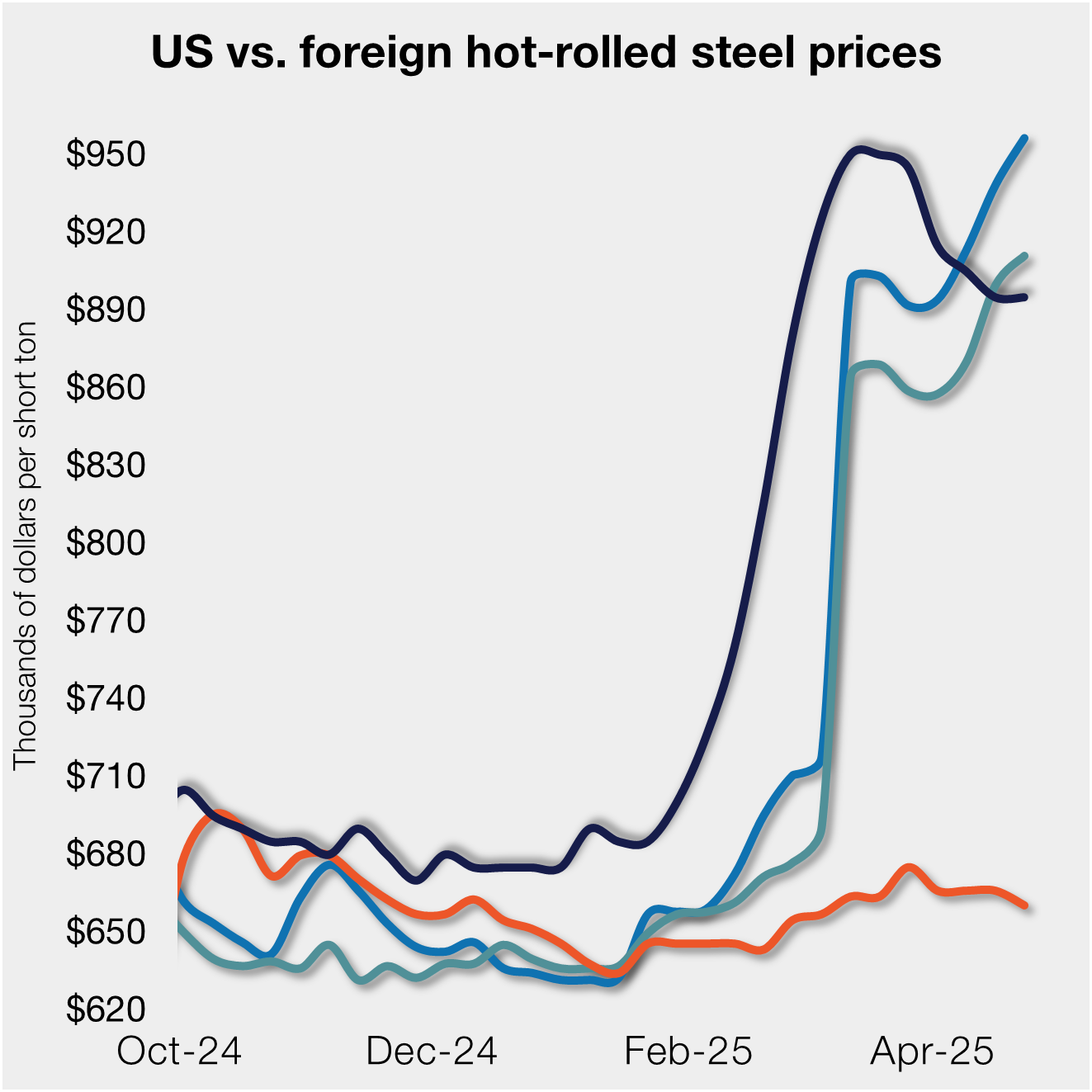Steel Products
AGC: Construction Costs Jump 7.4 Percent
Written by Sandy Williams
October 11, 2018
The cost of many products used in construction climbed 7.4 percent over the past year due to double-digit increases in commonly used construction materials, according to an analysis by the Associated General Contractors of America of new Labor Department data. Association officials noted that the cost increases come as many construction firms are already grappling with shortages of skilled craftsmen essential for projects, but have limited ability to increase prices for their services.
“The new construction materials cost data likely underreports actual price increases, since federal officials collected most of their data in the first half of the month, before new tariffs affecting many construction materials started,” said the association’s chief economist, Ken Simonson. “Contractors are paying more for the materials they use and workers they employ, but aren’t able to pass most of those new costs on to their clients.”
Simonson noted that the producer price index for inputs to construction industries—a weighted average of all goods and services used in construction—increased 0.2 percent from August to September and soared 6.2 percent since September 2017, while the index for goods except services rose at a faster pace of 7.4 percent. In contrast, an index that measures what contractors say they would charge to construct five types of nonresidential buildings rose just 3.5 percent over the year, indicating that contractors were absorbing more of the costs than they were passing on to owners.
{loadposition reserved_message}
Diesel fuel, steel pipe and tube, asphalt paving mixtures and aluminum products were among the diverse products that contributed to the large year-over-year cost increases, the economist said. He pointed out that from September 2017 to September 2018, there were producer price index increases of 29.3 percent for diesel fuel, 22.1 percent for steel pipe and tube, 11.7 percent for fabricated structural metal, 11.2 percent for asphalt paving mixtures and blocks and 10.7 percent for aluminum mill shapes. Additionally, the administration recently imposed an interim tariff of 10 percent on $200 billion worth of Chinese imports, including goods important to the construction industry, and plans to increase the rate to 25 percent in the new year.
A survey the association released in August found that 80 percent of respondents reported difficulty filling hourly craft worker positions. As a result, 62 percent of firms report they are paying higher salaries to attract and retain workers. “The more firms get squeezed by higher materials and labor costs, the less likely they are to continue hiring and investing in new equipment,” said Stephen E. Sandherr, the association’s chief executive officer.

Sandy Williams
Read more from Sandy WilliamsLatest in Steel Products

US rig count up, Canada declines
Oil and gas drilling activity was mixed this week, according to Baker Hughes. US rig counts expanded for a second straight week, while Canadian activity continued its seasonal slowdown of eight consecutive weeks.

US, offshore CRC prices continue to diverge
US cold-rolled (CR) coil prices declined again this week, slipping for a third straight week. Most offshore markets did the opposite, moving higher this week.

S232 lifts EU HR price over US, Asian HR still well behind
Domestic hot-rolled coil prices were flat this week after dropping for four straight weeks. Most offshore markets bucked the trend and gained ground.

SMU Steel Demand Index dips into contraction
SMU’s Steel Demand Index has moved into contraction, according to late April indicators. The slowdown comes in response to growing tariff uncertainty after the index reached a four-year high in late February.

Nucor selects Fives Group for new galv line at CSI
Nucor Corp. has tapped Fives Group as its partner in designing and manufacturing the new continuous galvanizing line being added at its California Steel Industries (CSI) joint venture in Fontana, Calif.
